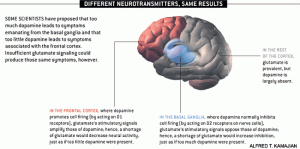Generally, when organizations form teams, these organizations have specific projects or goals in mind. A team is simply a tool that accomplishes a project or goal.
But no matter what the reason teams are formed, they go through four stages, according to a 1965 research paper by Bruce Tuckman of the Naval Medical Research Institute at Bethesda. The following sections describe Tuckman’s four stages.
Stage 1: Forming
During the forming stage, team members not only get to know each other but also familiarize themselves with their task and with other individuals interested in the project, such as supervisors. At the end of the forming stage, team members should know the following:
· The project’s overall mission
· The main phases of the mission
· The resources at their disposal
· A rough project schedule
· Each member’s project responsibilities
· A basic set of team rules
Keep in mind that no one person needs to be responsible for the team. Project management duties can be shared, with different members taking responsibilities for each stage of the project.
Stage 2: Storming
Storming is characterized by competition and conflict within the team as members learn to bend and mold their feelings, ideas, attitudes, and beliefs to suit the team organization. Although conflicts may or may not surface as group issues, they do exist. Questions about who is responsible for what, what the rules are, what the reward system is, and what the evaluation criteria are arise. These questions reflect conflicts over leadership, structure, power, and authority. Because of the discomfort generated during this stage, some members may remain completely silent, while others attempt to dominate. Members have an increased desire for structural clarification and commitment.
In order to progress to the next stage, team members must move from a testing-and-proving mentality to a problem-solving mentality. Listening is the most helpful action team members and the team leader can take to resolve these issues.
Stage 3: Norming
In Tuckman’s norming stage, team relations are characterized by cohesion. (Keep in mind that not all teams reach this stage.) Team members actively acknowledge all members’ contributions, build community, maintain team focus and mission, and work to solve team issues. Members are willing to change their preconceived ideas or opinions on the basis of facts presented by other members, and they actively ask questions of one another. Leadership is shared, and cliques dissolve. As members begin to know and identify with one another, the trust that individuals place in their colleagues fosters cohesion within the team.
During this stage of development, team members begin to experience a sense of group belonging and a feeling of relief as a result of resolving interpersonal conflicts.
Stage 3 is characterized by the flow of data between team members: They share feelings and ideas, solicit and give feedback to one another, and explore actions related to the task. Creativity is high. If this stage of data flow and cohesion is attained by the group members, their interactions are characterized by openness and sharing of information on both a personal and task level. They feel good about being part of an effective group.
The major drawback of the norming stage is that members may begin to fear the inevitable future breakup of the group; they may resist change of any sort.
Stage 4: Performing
Again, the performing stage is not reached by all teams. Those teams that do reach this stage not only enjoy team members who work independently but also support those who can come back together and work interdependently to solve problems. A team is at its most productive during this stage.
Team members are both highly task-oriented and highly people-oriented during this stage. The team is unified: Team identity is complete, team morale is high, and team loyalty is intense. The task function becomes genuine problem solving, leading to optimal solutions and optimum team development. There is support for experimentation in solving problems, and an emphasis on achievement. The overall goal is productivity through problem solving and work.
Adjourning
Teams assembled for specific project or for a finite length of time go through a fifth stage, called adjourning , when the team breaks up. A planned conclusion usually includes recognition for participation and achievement and an opportunity for members to say personal goodbyes. Disbanding a team can create some apprehension, and not all team members handle this well. The termination of the team is a regressive movement from giving up control to the team to giving up inclusion in the team. This last stage focuses on wrapping up activities rather than on task performance












